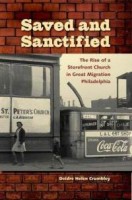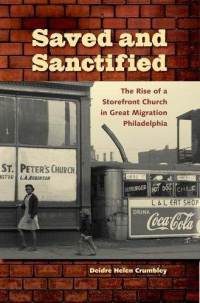 Author: Deidre Helen Crumbley
Author: Deidre Helen Crumbley
Publisher: University Press of Florida
Book Review by: Paiso Jamakar
This book is part of a series on the history of African-American religions.
Those familiar with the history of the United States know about the migration of millions of African Americans from the southern part of the country – where racial violence had become rampant – to its north in the first half of the nineteenth century. Per Wikipedia, from 1940 to 1970 the South lost about five million Blacks. They moved not only to the North but also to the West.
The main reasons for this movement, later called by historians the Great Migration, was to escape discrimination, defamation (e.g. with the use of the word ‘nigger’ and others) and degradation, including physical attacks of Blacks (now referred to as African Americans) by Whites. This included not only their being driven out and not allowed into buses, restaurants, theaters and many other public places, but also from places of potential employment.
In other words, the cause of the Great Migration was not just denial from being seen around Whites, or in places ‘reserved’ for Whites, but also denial of the crucial opportunity to make a living. When the means to survive is taken away from a people in a given region, the only alternative left is to move and seek a means of living elsewhere.
So as African Americans moved up from the South to resettle in the North and elsewhere, one aspect of this historical phenomenon that has not been studied closely enough is their establishment of religious institutions. This book seeks to provide that missing perspective.
A popular institution in the religious history of African-Americans is what is termed the ‘storefront church.’ This book has as its subject one such church in Philadelphia, which was set up by a charismatic woman born 16 years after the Emancipation Declaration that freed Blacks from slavery.
This church founder, born in Virginia in 1879, and settled in Philadelphia in 1914, was called Mother Brown. She lived to be 104 years old, until her death in 1984. She is described by the author as a healer, pastor and preacher. With a call by God to preach the gospel, she brought together a group of Philadelphians to establish a strong and enduring community of faith in the midst of racial inequity in that period of time.
Deidre Helen Crumbley, author of this book Saved and Sanctified, grew up in one such church, which she simply calls The Church, a symbol of the numerous storefront churches that sprang up in many parts of the country. The Church has survived the death of its founder, and this book is essentially about religious institution-building, the author points out.
Crumbley is an anthropologist and an associate professor in the Africana Studies Program at North Carolina State University. She is also author of another work, Spirit, Structure, and Flesh: Gendered Experiences in African Instituted Churches among the Yoruba of Nigeria.
This book, from an anthropological viewpoint is described by the author as a study “that sketches an ethnographic portrait of an unaffiliated inner-city storefront church as a window on American social history and an African-American culture.”
That is an interesting perspective and for those who want to delve deeper into this aspect of African-American history, I recommend that they acquire a copy and read this book.







